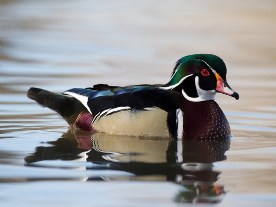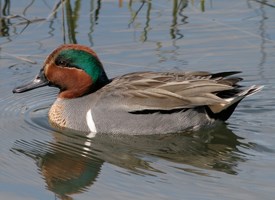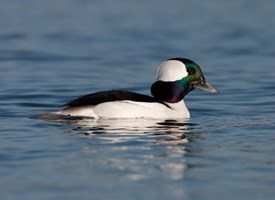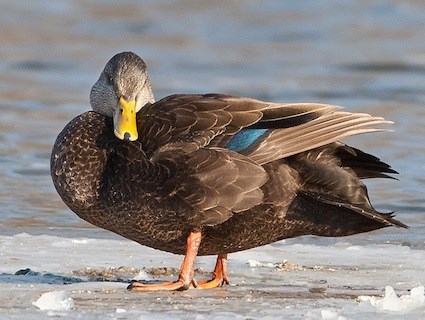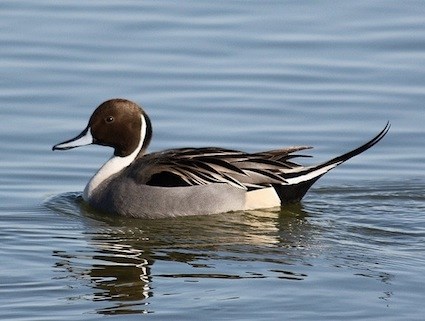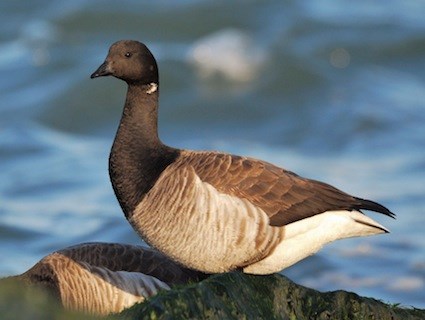|
Blackstone River Watershed Association
|
|
|
BRWA NEWS
|
BRWA Board Continues to Grow

Last November, Ken Bedard joined the Board of the BRWA, bringing with him
subtantial experience in mechanical engineering and project managment. As
a longtime resident of Millbury, he also brings his passion to see the
Blackstone River revitalized. Prior to joining the BRWA, Ken became trained
last April as a volunteer water quality monitor for the Blackstone River
Coalition's Headwaters Team. We are looking forward to Ken's contributions
to our river protection mission!
top
|
WSU Intern Joins Team
The BRWA is excited to have Worcester State University student Monica Lecuyer
interning with us this semester. She will spend the next four months assisting
the board and staff with a wide range of BRWA initiatives including outreach
to the media and general public, water quality monitoring, the Watershed and
Us program, the EarthDay Cleanup, environmental policy research and fundraising. Welcome!
BRWA intern Monica Lecuyer high above the Blackstone in Northbridge.

|
top
|
EarthDay Cleanup: Hold the Date!
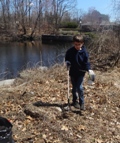
The BRWA's annual river cleanup will be held this year on Sunday April 17th
from 1-3 in conjuction with the Clean and Green Fair, which is generously
co-sponsored by our wonderful partner Alternatives Unlimited, Inc. Each year,
the cleanup gets bigger and better. And the river gets cleaner and healthier!
So mark your calendars, recruit some friends, and watch our website for
details in the coming months.
top
|
|
CALENDAR OF EVENTS
|
January 24 is National Compliment Day.
Use this occasion to thank someone you know for helping protect the Blackstone
River and its watershed! How about a farmer that keeps livestock out of a
stream or maintains natural wetlands as a buffer between crops and water?
Perhaps a town engineer who is supportive of green infrastructure with
commercial and residential development. Or maybe an educator who exposes
youth to the intimate connection between land use and water protection.
|
| 1/24 |
Full Moon (the "wolf moon").
|
| 1/25 |
Brown Bag Along the Blackstone.
12:00-1:00 p.m. Blackstone River and Canal State Park,
Uxbridge. Bring a lunch, watch an episode or two of “Along the Blackstone”,
an award winning series of videos by the NPS, and take an optional canal walk
at 1:00. RiverBend Farm, Uxbridge. Info: 508-278-7604.
|
| 1/28 |
BRWA Board Meeting. 6:45 p.m. to 8:00 p.m. 287 Oak St., Uxbridge.
info
|
| 2/1 |
Trout Unlimited Central Mass Chapter Monthly Meeting.
6:00 -9:00 p.m. Auburn Sportsman's Club. 50 Elm Street, Auburn, MA.
info
|
| 2/2 |
Groundhog Day! |
| 2/14 |
Cornell's annual Great Backyard Bird Count
(http://gbbc.birdcount.org/)
2:00 p.m. West Hill Dam. 518 East Hartford Avenue, Uxbridge. Meet at the dam. Info: 508-278-2511.
|
| 2/17 |
Blackstone River Watershed Council Monthly Meeting.
6:30pm - 8:30pm. Lincoln RI.
info
|
| 2/25 |
BRWA Board Meeting. 6:45 p.m. to 8:00 p.m. 287 Oak St., Uxbridge.
info
|
| 3/5 |
Blackstone River Coalition’s Annual Water Quality Monitoring Summit.
9:15 a.m. -12:00 p.m. Hopedale Community House, 43 Hope St, Hopedale, MA.
Info: Susan Thomas, acadia94@verizon.net
or 508-839-9488. See below for details.
|
top
|
THINK GLOBAL, ACT LOCAL
|
Hydroelectric Project on Blackstone Up for Relicensing
Pieter DeJong, BRWA Board member, joined other members of the environmental community on January 8th at a joint agency/public meeting and site visit of the Tupperware Hydroelectric Project ("Project") in Blackstone, Massachusetts. There are numerous issues regarding the proposed relicensing by Blackstone Hydro, Inc., and it is important that the environmental and scientific communities weigh in on these issues.
FERC (the Federal Energy Regulatory Commission) has already determined that
this Project can proceed with the "traditional" rather than the "integrated"
review. Unfortunately, this streamlined process, by omitting certain
oversight and requirements, could jeopardize the ability of state
environmental agencies and NGOs to ensure appropriate protection for the
river. This is all the more reason for river advocates to play an active role
in the relicensing.
The initial application filed last November and now under review, is referred
to as the PAD (preliminary application document). It and other documents
associated with this project can be viewed at FERC’s eLIbrary system at:
http://www.ferc.gov/docs-filing/elibrary.asp. (Docket Number P-3023)
Constructed in 1901, the Tupperware hydro project is located in North
Smithfield, Rhode Island; Blackstone and Millville, Massachusetts. The
Project boundary is everything that could be inundated by floodwaters
including land not owned by the hydro operator. The legal boundary is
determined by "metes and bounds" up to the canal, and by elevation 195 upstream.
It is essential that these boundaries are accurate because inches matter for
jurisdictional purposes. For example, five potential vernal pools have been
identified as being alongside or within the Project boundary.
The project contains four turbines capable of generating 1,700 kW of power.
The 12-foot diversion dam, known as Rolling Dam, is located at the boat launch
above the Blackstone Gorge, which is part of the Blackstone River and Canal
State Park. Approximately 58 acres of headpond are created by a headgate dam
below which water travels through a 1,100 foot canal with four penstocks.
Below the power plant, water is routed through the tailrace channel for 100
feet before joining up with the river downstream of where the Branch River
enters the Blackstone.
Contrary to a statement made at the January 8 meeting, the Blackstone Gorge
itself is affected by the hydro plant's operations. The Project can handle
a maximum of 820 cubic feet/second (csf). Higher flows are diverted over the
main (diversion) dam through the gorge. This stretch of waterway is considered
the "bypass reach". Whereas no minimum flow is required in the current
permit, a voluntary bypass flow of 11-21 cfs is stated in the operations protocol.
The issue of minimum flow has a direct impact on water quality parameters,
including dissolved oxygen, dilution of contaminants, temperature, and stream
surge that can resuspend sediments harmful to aquatic life. Minimum flow must
be thoroughly addressed during the FERC review. For example, if a TMDL were
to be established for dissolved oxygen, allowing more water to run through the
gorge (bypass) would improve the oxygen levels.
The need to have reliable and timely measurements of instantaneous flow of
the river, in order for the Project to adjust operations as needed to maintain
run of river flow, is vital. However, the pressure transducer up river of the
site was inadvertently taken down during recent bridge work. Additionally,
it is not clear if the Tupperware plant has been updated to permit a graduated
response by the four turbines to fluctuating water levels in the head pond.
This is one of many points of concern about the PAD's completeness raised
during the January 8 meeting.
The Tupperware hydroelectric project is intended to operate as "run of the
river," meaning that minimal water storage is used to generate the electrical
power. It also implies that the normal course of the river is not altered
significantly. This assumption is key for maintaining a healthy aquatic
ecosystem, and one that must be examined closely and verified during the FERC
relicensing process. In the past, there had been discussion, but no action,
on setting an aquatic base flow (ABF) to protect habitat below the dam.
Previous surveys of the river at the project location indicated the presence
of bluegill, white sucker, fallfish, and other warm water species. Fresh water
mussels and a "moderately impacted community" of macro invertebrates including
caddisflies are listed for the site as well. The vegetation within the project
area is primarily forested shoreline with narrow bands of wetlands associated
with the river. The precise amount of wetland acreage is one of many key
points that need to be verified during the FERC review.
Peter Coffin, Coordinator for the Blackstone River Coalition, has seen the
Project since its last FERC licensing four decades ago and is calling on the
environmental community to get a seat at the table now. "Forty years ago, the
water quality was so bad, no one thought it useful to impact hydro operations
for the non-existent biota, and their permit had no consideration for by-pass
release or fish ladders or measures to reduce entrainment of fish through the
turbines,” Coffin commented. “Now, with significant water quality improvements
and more fish and kayakers in the river, we collectively need to reconsider
how much water is needed in the by-pass and at what times of the year. The
plant should definitely upgrade their gages to allow true run-of river operations."
Tailrace of Tupperware Hydroelectric plant
photo by Susan Thomas
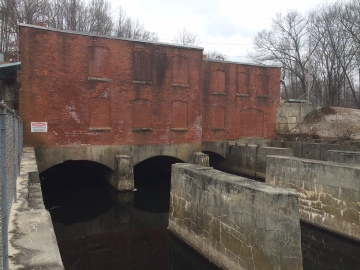
|
The hydroelectric permit states the term "discharge," meaning the regulatory
focus is downstream of the tailrace. One implication of this language is that
even if the operations affect upstream water quality or habitat, it is unclear
how these concerns can be addressed during the application review. A second
implication is that the waters technically discharge into RI so it will be the
RI Department of Environmental Management issuing 401 certification under the
Clean Water Act. Massachusetts would not have the same level of oversight, but
would be able to submit comments.
Another consideration during the review process is the potential impact of the
Project's operation on recreational use of the river and surrounding lands. In
addition to being a state park, the river is part of the newly created
Blackstone River Valley National Historic Park, and the SNET trail passes
across the head pond. Anglers, boaters, hikers, birders, and other stakeholders
should have a say on the relicensing process.
The next step in the process is for interested parties including the BRWA to
submit comments on the PAD by March 8th, 2016. This includes requesting any
studies we feel are necessary to fully understand the potential impact of the
Project on the Blackstone River. Studies required by FERC will be conducted
during 2016 and 2017, after which a report will be issued. The next round of
comments will be due during the summer of 2018, after which the final application
is due.
top
|
Stronger State Role in Stormwater
Polluted stormwater is the leading contributor to
degraded water quality. So on January 14, the BRWA joined 34 other
environmental organizations across the state to urge MA DEP to assume
authority for stormwater management under the National Pollution Discharge
Elimination System (NPDES) by co-issuing the new MS4 general permit (small
municipal separate storm sewer system). Expected out in February, it is long
overdue, with the last permit issued back in 2003. Currently, Mass DEP
delegates its regulatory authority to EPA, thereby undermining the state's
ability to bring about meaningful improvements in water protection within the
Blackstone River watershed and across the state.
The BRWA believes that assuming state control of stormwater management creates
a stronger position for Mass DEP during permit implementation and enforcement
actions. It would also compel municipalities to advocate more at the local
level for green infrastructure and other practices that reduce water pollution.
Such practices are already promoted by the BRWA through its Watershed and Us
school program and other initiatives. Look for our next e-newsletter for more
information on the MS4 general permit.
top
|
Advocate through Art
The Massachusetts Junior Duck Stamp Program is an
opportunity for youth in kindergarten through 12th grade to share their
talent in art and their interest in water birds. This program helps to
educate young people about "wetlands and waterfowl conservation,...
habitat requirements of various kinds of ducks and geese and...the
beauty, diversity, and interdependence of these species."
2015 winner - Junior Duck Stamp Contest

|
The deadline for submissions is February 15, 2016. Winners will continue on to the
national contest. The public is encouraged to view top entries at the
Notre Dame Academy in Worcester this March. For more information,
contact: Pam.Landry@state.ma.us or at (508) 389-6310.
top
|
Annual Volunteer WQ Monitoring Summit
On Saturday, March 5th in Hopedale, Mass, the
Blackstone River Coalition (BRC) will sponsor its annual Volunteer Appreciation
Breakfast and Summit for its watershed-wide water quality monitoring program.
The summit will include a presentation of the annual Report Card, which
highlights physical, chemical and aesthetic parameters throughout the
watershed. The Keynote address will be given by the Mass Department of
Environmental Protection about ecological restoration of aquatic habitats and
how it’s intricately tied to water quality.
The Appreciation Breakfast and Summit will be held this year at the Hopedale
Community House on Hope Street, from 9:15 a.m. to noon. This event is an
opportunity to thank the volunteers for their invaluable contribution to the
BRC's efforts to restore the Blackstone River and improve the health of the
Blackstone River Watershed.
A volunteer monitor checks the temperature of her site on Coal Mine Brook in Worcester.
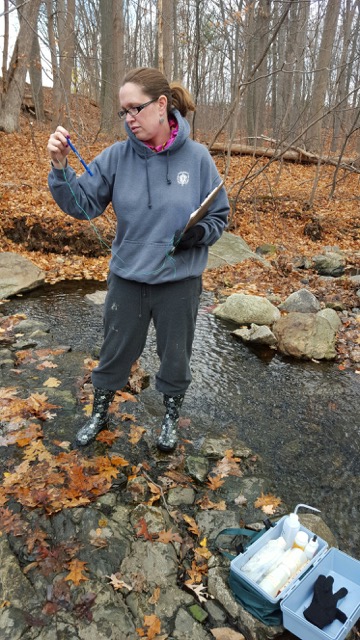
|
2015 was the 12th season for the program, which encompasses 75 sites from
Worcester to Pawtucket. A fabulous crew of over 75 dedicated volunteers monitor
these sites along the Blackstone River and its tributaries on the second
Saturday of the month from April through November. This long-term monitoring
program provides critical data on the status and trends of the quality of the
Blackstone River watershed.
Anyone interested in the quality of the Blackstone River and its watershed
should plan to attend. If you've ever thought of becoming a volunteer monitor,
the Annual Summit is the place to begin! Please R.S.V.P. to Susan Thomas,
acadia94@verizon.net or 508-839-9488.
top
|
|
MY BLACKSTONE
|
A River Expedition
By Kevin Klyberg, National Park Ranger
I grew up with the Blackstone Canal in my backyard,
and the Blackstone River in sight out the back window. But I didn’t truly get
to know the river until I was almost 30 years old. In 2000, the Blackstone
River Valley National Heritage Corridor sponsored Expedition 2000, a paddling
trek from Worcester to Providence. It was an incredible four-day experience
as our core team traversed the entire distance, joined by additional paddlers
at selected spots along the way. We stopped several times each day for public
events to promote the wonders of the Blackstone River, and to help kick off
the BRC's Campaign for a fishable, swimmable river.
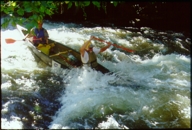 Those four days were fantastic, but for me a lot of the Expedition was spent
keeping to schedules and hustling canoes through portages. My own special
experience came in the months leading up to the Expedition. That summer, my
fellow rangers and I spent several weeks getting out on the river. We scouted
the entire trip, figuring out travel times, removing obstacles from the river,
finding - and occasionally creating - landing and launch points, and even
blazing a few portage trails.
Those four days were fantastic, but for me a lot of the Expedition was spent
keeping to schedules and hustling canoes through portages. My own special
experience came in the months leading up to the Expedition. That summer, my
fellow rangers and I spent several weeks getting out on the river. We scouted
the entire trip, figuring out travel times, removing obstacles from the river,
finding - and occasionally creating - landing and launch points, and even
blazing a few portage trails.
It was long, hot work. But I got to see it all, the entire Blackstone River
from its trickling headwaters, gaining strength from each additional
tributary. I got to see the vast variety of wildlife that calls the
Blackstone home, and see the network of the industrialized landscape that
harnessed the Blackstone into America’s hardest working river.
I had explored most of the Blackstone River before those weeks. But that was
the first time I got to experience the entire river, and really feel how it
breathes. I came away from the experience with an appreciation for the
wonders of the river.
top
|
|
BE GREEN
|
 Get Fresh
Get Fresh
Whether you rejoice or groan at the arrival of
winter, you tend to spend more time indoors this time of year. With
the doors and windows closed up tightly. Not only does this keep the cold
out, it keeps the fresh air out and lowers the overall air quality around
you. This is especially relevant for those who work from home or stay home
caring for family members.
Rather than driving to a box store to purchase an energy-hungry air purifier,
fill your home with green plants that will naturally remove CO2 and toxins
that are emitted from carpet, printer inks, tobacco smoke, paints, and even
paper towels. Houseplants also benefit us by releasing oxygen and moderating
moisture levels. There are a wide variety of plants that will thrive in
your home this winter depending on your lighting, temperature, and humidity
conditions.
Consider a display of artistic bonsai plants in addition to the traditional
dependable foliage plants like English ivy, peace lily, philodendron, snake
plant, pothos, spider, ficus, dieffenbachia, dracaena, and ferns.

top
|
|
REFLECTIONS
|
“It is not half so important to know as to feel.” Rachel Carson
Winter is a wonderful time for birding. And not just at the backyard feeder.
Head to a marsh or harbor that has open water to listen to the symphony of
quacks, squeeks, squawks, squeals, pips, mews and whistles. It will be
music for your ears and soul.
Here is short list of waterfowl to keep an eye and ear out for. Click on the names for audio
recordings and identification information on the Cornell Lab of Ornithology website:
https://www.allaboutbirds.org/.
top
|
Views & opinions expressed in linked websites do not necessarily
state or reflect those of the BRWA.
|
|
Your input is crucial to this eNewsletter. If you have a local
watershed-related story, information of interest to our subscribers, or
comments about this publication, drop an email to the editor.
The Blackstone River Watershed Association (BRWA) has a mission to
engage, educate, and advocate for improved water quality in the Blackstone
River Watershed; its objectives are to:
- Engage the public in watershed stewardship activities,
- Educate members, supporters, and residents on watershed protection strategies, and
- Advocate to local residents, community leaders, non-profit partners, and
state regulators to take actions that will help to ensure our waterways continue
to provide healthy habitat and enjoyable recreational opportunities.
The BRWA eNewsletter is published monthly by the Blackstone River Watershed
Association. BRWA is a 501(c)(3) non-profit organization.
Editor: Susan Thomas susan.thomas@thebrwa.org
Mailing address: BRWA, 271 Oak Street Uxbridge, MA 01569
Phone: 508-278-5200 Web: www.thebrwa.org
Click here for back issues.
|
|




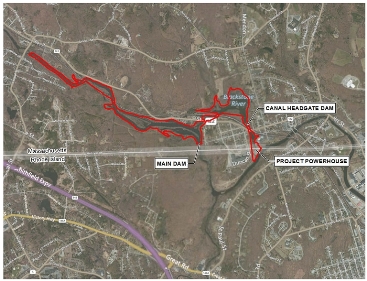



 Those four days were fantastic, but for me a lot of the Expedition was spent
keeping to schedules and hustling canoes through portages. My own special
experience came in the months leading up to the Expedition. That summer, my
fellow rangers and I spent several weeks getting out on the river. We scouted
the entire trip, figuring out travel times, removing obstacles from the river,
finding - and occasionally creating - landing and launch points, and even
blazing a few portage trails.
Those four days were fantastic, but for me a lot of the Expedition was spent
keeping to schedules and hustling canoes through portages. My own special
experience came in the months leading up to the Expedition. That summer, my
fellow rangers and I spent several weeks getting out on the river. We scouted
the entire trip, figuring out travel times, removing obstacles from the river,
finding - and occasionally creating - landing and launch points, and even
blazing a few portage trails.

